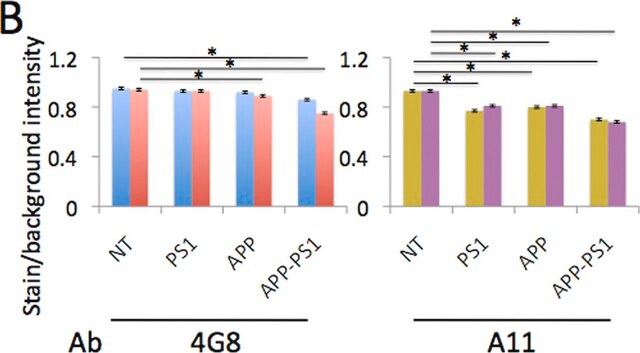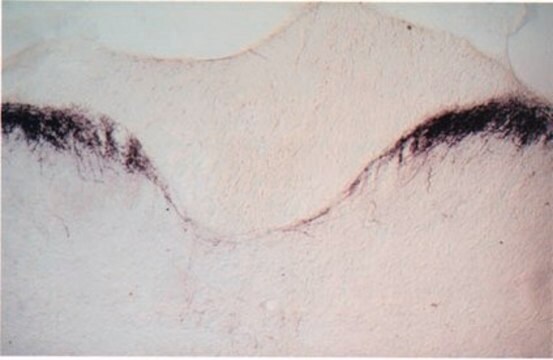AB2287
Anti-Amyloid Fibrils LOC Antibody
serum, Chemicon®
Synonyme(s) :
Amyloid Fibrils, Amyloid Fibrils LOC
About This Item
Produits recommandés
Source biologique
rabbit
Niveau de qualité
Forme d'anticorps
serum
Type de produit anticorps
primary antibodies
Clone
polyclonal
Espèces réactives
human
Réactivité de l'espèce (prédite par homologie)
mouse, rat
Fabricant/nom de marque
Chemicon®
Technique(s)
ELISA: suitable
dot blot: suitable
immunocytochemistry: suitable
immunohistochemistry: suitable
immunoprecipitation (IP): suitable
western blot: suitable
Isotype
IgG
Numéro d'accès NCBI
Numéro d'accès UniProt
Conditions d'expédition
wet ice
Modification post-traductionnelle de la cible
unmodified
Informations sur le gène
human ... APP(351)
mouse ... App(11820)
Description générale
Spécificité
Immunogène
Application
Qualité
Dot Blot Analysis: 1:1,000 dilution of this antibody detected Amyloid fibrils in fibrils and monomers but not in prefibril oligos. A 1:5,000 dilution, as cited in Glabe C., et al. (2007) Mol Neurodegener 2, 18 shows that the binding with monomers is likely non-specific, and is a possible result of high primary antibody concentration.
Stockage et stabilité
Handling Recommendations: Upon receipt and prior to removing the cap, centrifuge the vial and gently mix the solution. Aliquot into microcentrifuge tubes and store at -20°C. Avoid repeated freeze/thaw cycles, which may damage IgG and affect product performance. After thawing, store at 4°C in 0.02% sodium azide.
Informations légales
Not finding the right product?
Try our Outil de sélection de produits.
Code de la classe de stockage
10 - Combustible liquids
Classe de danger pour l'eau (WGK)
WGK 1
Certificats d'analyse (COA)
Recherchez un Certificats d'analyse (COA) en saisissant le numéro de lot du produit. Les numéros de lot figurent sur l'étiquette du produit après les mots "Lot" ou "Batch".
Déjà en possession de ce produit ?
Retrouvez la documentation relative aux produits que vous avez récemment achetés dans la Bibliothèque de documents.
Notre équipe de scientifiques dispose d'une expérience dans tous les secteurs de la recherche, notamment en sciences de la vie, science des matériaux, synthèse chimique, chromatographie, analyse et dans de nombreux autres domaines..
Contacter notre Service technique







